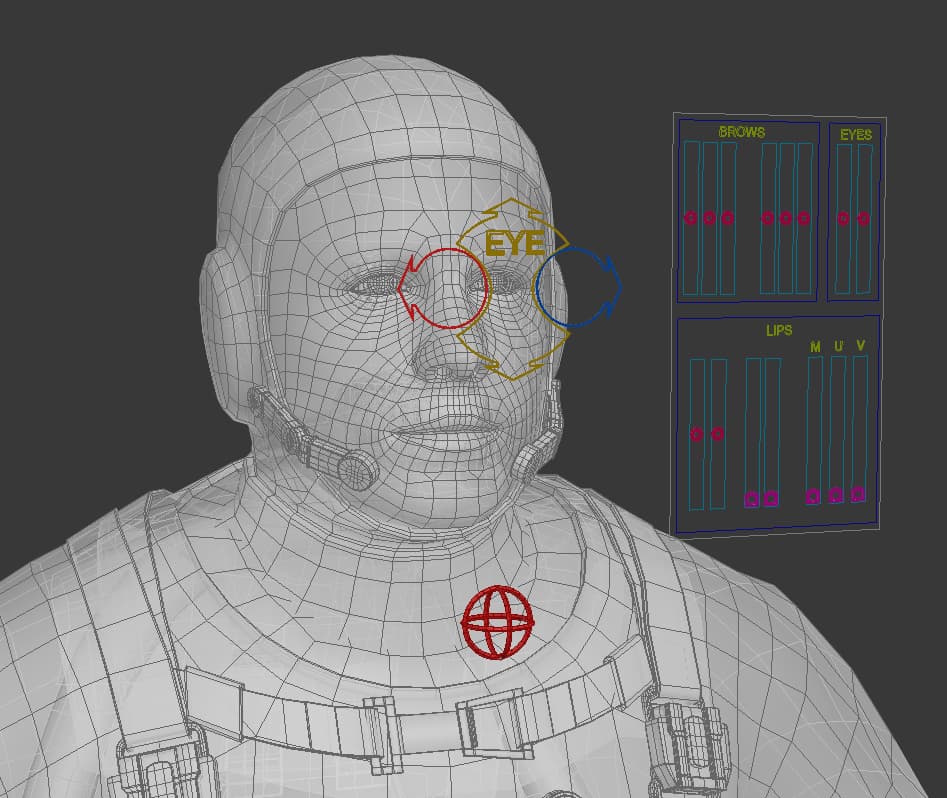Breathing Life into Virtual Beings
Breathing Life into Virtual Beings: A Deep Dive into Spawn’s Intelligent 3D Agents
Spawn’s Intelligent 3D Agents are redefining the boundaries of creativity and interactivity in digital worlds. By seamlessly blending AI, neural processing, and blockchain technology, Spawn empowers creators to design, animate, and evolve lifelike characters for virtual environments, games, and even the physical world through 3D printing.
Let’s take a closer look at how Spawn brings virtual beings to life.
1. Neural Input: Data Drives the Character
At the core of every Spawn agent is its ability to interact dynamically with its environment. The Neural Input system serves as the agent's sensory gateway, allowing it to process and respond to environmental data in real-time. This includes inputs like:
- Player Interactions: Conversations, gestures, and in-game commands.
- Environmental Stimuli: Lighting changes, object proximity, or other contextual cues.
- AI-Driven Context Awareness: The agent can recognize recurring interactions and adjust behavior accordingly.
This real-time adaptability ensures that every agent feels grounded, present, and responsive in its environment.
2. Memory Synthesis: Learning and Contextual Understanding
Spawn’s agents stand apart from traditional NPCs because they evolve over time. Through Memory Synthesis, agents process and contextualize information from past interactions, enabling them to build a personality and react more authentically. For example:
- Learning Player Preferences: Agents can adapt their dialogue or actions based on how players engage with them.
- Building Relationships: The more an agent interacts with a user, the deeper and more personalized the connection becomes.
- Persistent Development: An agent’s memory carries over across sessions, creating a sense of continuity and immersion.
3. Blockchain Commit: Immutable Memory Storage
What makes this system truly unique is its blockchain-verified memory. Every key interaction, decision, and update is stored securely on an immutable ledger. This ensures:
- Transparency: Developers and players alike can verify that the agent’s memory is consistent and unaltered.
- Integrity: The agent’s development remains tamper-proof and authentic.
- Cross-Platform Continuity: Memory checkpoints are cryptographically secured, meaning agents can transition between platforms or devices without losing their identity or knowledge.
4. State Evolution: Dynamic Personality and Behavior
Spawn’s agents aren’t static; they grow. The State Evolution system allows each agent to dynamically adjust its personality, skills, and decision-making processes over time. Key aspects include:
- Emotion Simulation: Agents express emotions through facial animations, body language, and tone of voice. For example, an agent might show frustration if a task is repeatedly interrupted.
- Behavioral Adaptation: Depending on past experiences, agents can evolve to become more empathetic, assertive, or strategic.
- Goal-Oriented Actions: Agents are capable of setting and pursuing goals, such as helping players solve puzzles or managing in-game systems autonomously.
This self-evolution transforms agents into fully autonomous entities capable of surprising and delighting users.
5. Advanced Phoneme Animation: Expressive Realism
Spawn’s Advanced Phoneme Animation system brings characters to life with highly realistic facial expressions and lip-sync capabilities. By leveraging neural networks, agents can:
- Sync Speech and Emotion: Every spoken word is matched with precise mouth movements and corresponding emotional expressions.
- Adaptive Animation: Facial expressions evolve in response to user interactions, such as smiling when praised or frowning when challenged.
- Realistic Subtleties: The system captures micro-expressions, adding a layer of nuance and depth to every interaction.
6. Hybrid Neural Processing: Fast and Efficient Intelligence
Spawn agents combine on-chain and off-chain AI processing to optimize performance:
- On-Chain: For secure memory storage and key decision-making tasks, ensuring integrity and transparency.
- Off-Chain: For computationally intensive tasks like real-time animation and natural language processing, maximizing responsiveness and speed.
This hybrid architecture allows Spawn agents to operate seamlessly in high-demand environments without sacrificing reliability or realism.
7. Cross-Platform Integration and Physical Realization
Spawn’s agents are designed to function across a variety of platforms, including gaming engines, virtual reality, and enterprise applications. But the possibilities don’t end in the virtual world. With 3D Printing Integration, users can bring their digital creations into reality. Whether you’re designing collectibles or functional robotics, Spawn bridges the gap between the virtual and physical.
8. Unmatched Animation and Interactivity
Spawn provides an intuitive workflow for creating and animating characters:
- AI-Driven Generation: Start with a simple prompt to describe the character. Spawn’s AI builds a fully realized 3D model, ready for customization.
- Automated Rigging and Animation: Apply a skeleton and animations with minimal effort. Lip-sync, body movements, and idle behaviors are all automated, yet customizable.
- Seamless Export: Export the fully rigged and animated model to Blender or other platforms for further enhancement. For example, you can add cinematic animations or tweak material properties in Blender using plugins like Auto Rig Pro and BlenderKit.
Conclusion
Spawn’s Intelligent 3D Agents revolutionize how we create, animate, and interact with virtual beings. Whether you’re crafting dynamic NPCs for a game, designing digital assistants, or exploring new applications for 3D printing, Spawn offers the tools to make your vision a reality.
By combining AI-driven generation, blockchain-verified memory, and seamless cross-platform integration, Spawn empowers creators to produce lifelike characters that grow, adapt, and engage like never before.
Stay tuned for more updates as we continue to push the boundaries of what’s possible in 3D creation.
